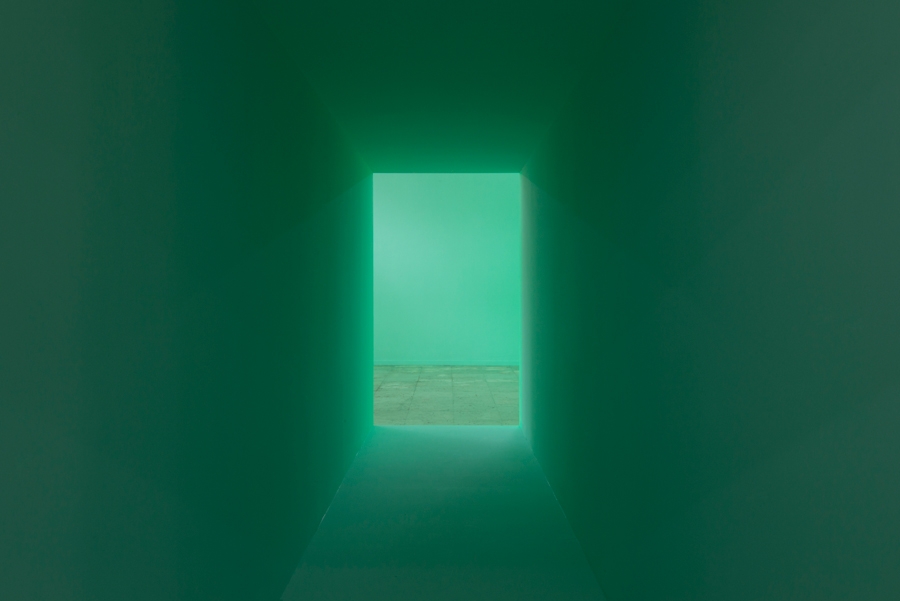Once art gave up on a self-contained aesthetics as a method of giving itself meaning, it entered into the business of importing meaning-giving theories from elsewhere; Marxism, psychoanalysis or poststructuralism, to name just a few, have all marked contemporary art over the last century. If art picks up on the intellectual preoccupations of its time, it’s no surprise that one of contemporary art’s latest critical trade-ins should be in the emerging fusion of the ‘object-centred’ philosophical thinking of speculative realism, alongside the ecological rhetoric gathered under the catchall concept of the Anthropocene – a perspective that treats human activity as a planetary process so impactful that it now leaves a lasting trace in the geological record.
What this seems to mean for contemporary artists is a peculiar approach to seeing humanity: either as just one more ‘thing’ among others – resulting in a fascination with other types of nonhuman entity out there – or as something already long dead and vanished, seen from some (virtual) future perspective in the form of its archaeological record. And you don’t have to look too far at the moment to see how artists and the artworld are lapping up this new zeitgeist.
So for example, this year’s Venice Biennale has its fair share of the new, on-trend misanthropism: take the Finnish Pavilion, by artists IC-98, whose presentation Abendland (Hours, Years, Aeons) (2015, part of their Abendland series of works), which, in their own words, seeks to ‘show a world without human beings, the new mutated landscape built on the remains of human civilization. This is not a paradise, not a regained pastoral existence. This is what it means to deal with the end results of the Anthropocene.’ Meanwhile, Susanne Pfeffer, curator of the Swiss Pavilion’s presentation by Pamela Rosenkranz, could be copy–pasting from the posthuman hymnsheet when she declares that ‘the anthropocentric construction of humanity turns out to be obsolete’, and that ‘thinking a universe beyond humanity and conceptualizing matter as inherently intelligible are among the urgent tasks of our present’. (Pfeffer is something of a curatorial repeat-offender in this regard – check out her show at Kassel’s Fridericianum, bluntly titled Inhuman, whose promotional image is a dribbled turd of grey goo.)
Some are curious about the rise of pro-object, posthuman thinking among artists and curators. In the introduction to their anthology Speculative Aesthetics (2014), editors Robin Mackay, Luke Pendrell and James Trafford shrewdly observe that the rise of speculative realism ‘was boosted by the convergence of [its] anti-correlationist theme with ruminations on climate change and the anthropocene (‘a world without us’)’. ‘Such an alliance is puzzling’, they continue, ‘when one considers what SR[speculative realism] might bring to this negotiation, insofar as its primary selling point… is its dismissal of the mediating role of human experience.’
Mackay and company rightly mock the familiar speculative realist conceit that ‘an artwork is simply a thing, in meek and equal existence with other things (fridge; wombat; pen-lid; asteroid; crime-report; proton, etc.)’. An artwork is, of course, not ‘simply’ a thing, since unlike a mountain range or solar radiation, it is part of reality that is of human cognition’s own making – its own production, its own reshaping of the material world. Artworks are the traces of people reshaping the world in the process of questioning it, and themselves.
But if the popularity of a way of thinking that dismisses the role of human experience appears puzzling, it is only if one overlooks how human experience, and ‘human mediation’, are seen negatively in both contemporary culture and philosophy. The trouble for critics such as those assembled in Speculative Aesthetics (they’re broadly speaking associated with the more optimistic, anthropocentric politics tagged as ‘accelerationism’) is that speculative realism derives its authority from the culture of misanthropy that rejects the idea humanity should reshape anything in its own image. The puzzle isn’t so puzzling: the Anthropocene has gained currency as a pseudo-scientific version of the environmental dogma that insists humans are fucking the planet up because they reshape matter already too much. Meanwhile, speculative realism gains popularity by giving philosophical credence to that cultural distaste for ‘human mediation’. What speculative realism thinks of as its novel philosophical insights – that humans are no exception to things, that there should be no distinction between human and nonhuman ‘actants’, and that the subject–object hierarchy in philosophy should be abolished – become the philosophical cheerleaders for a contemporary culture that denounces the idea that human beings can – even should – actively reshape the world in their own interests.
What has that to do with art? Only that art, in its refracted, partial form, is one manifestation of a broader human capacity not only to reshape matter (stars and tectonic plates and locusts also do that, after all), but to do it consciously, to do it in order to explore its own capacity to do so, and to do it because it wants to. Art, design, architecture, urbanism, society, economy, ecosphere – all aspects of what human beings can choose to reshape, through conscious action. And yet this is what many today most fear. Instead, pacified, inert humans look gormlessly on, fascinated by a world of objects they pretend they have never made, gawping from a pretend future at a society they pretend is already over.
This article was first published in the Summer 2015 issue.
